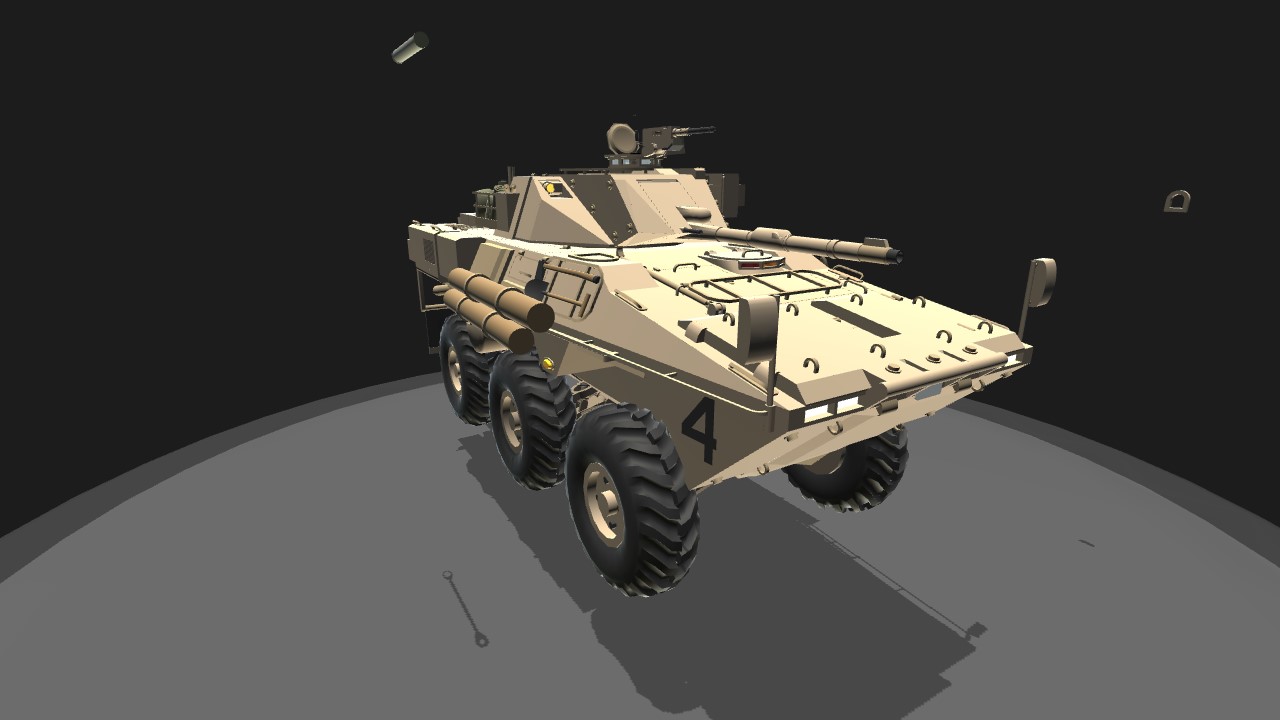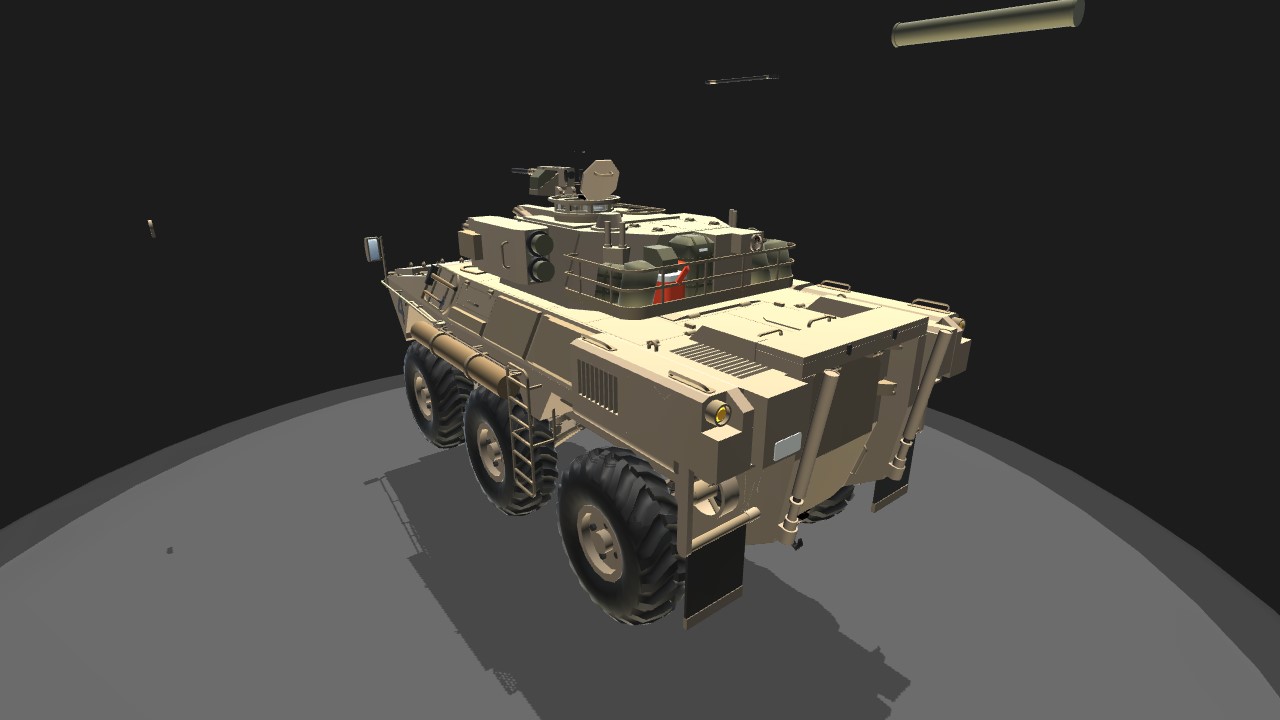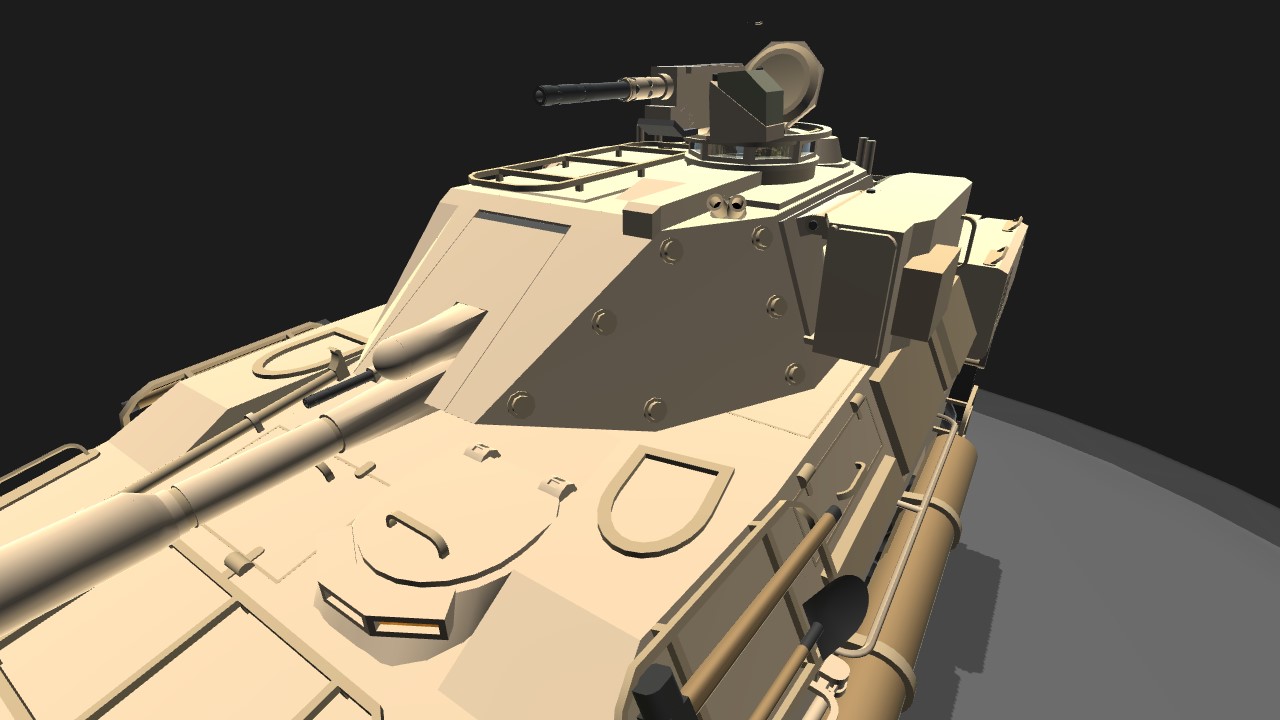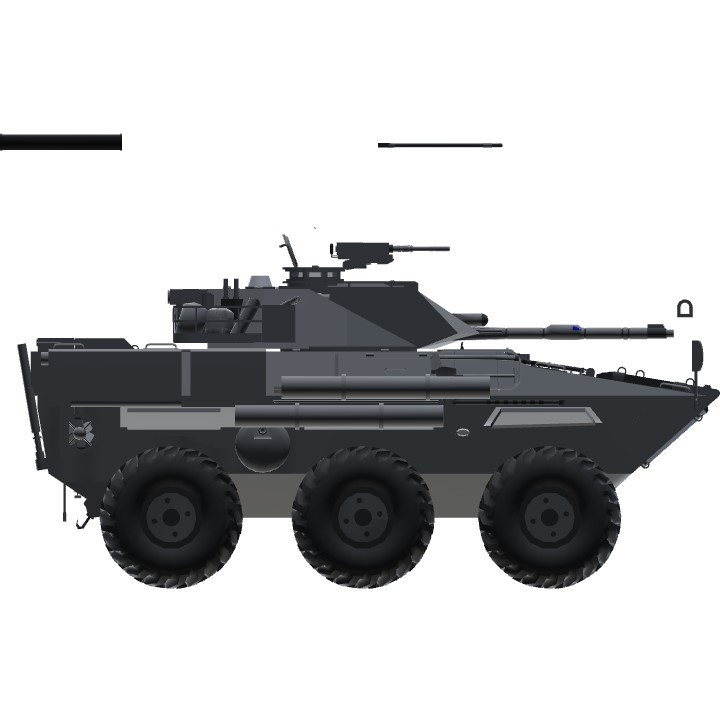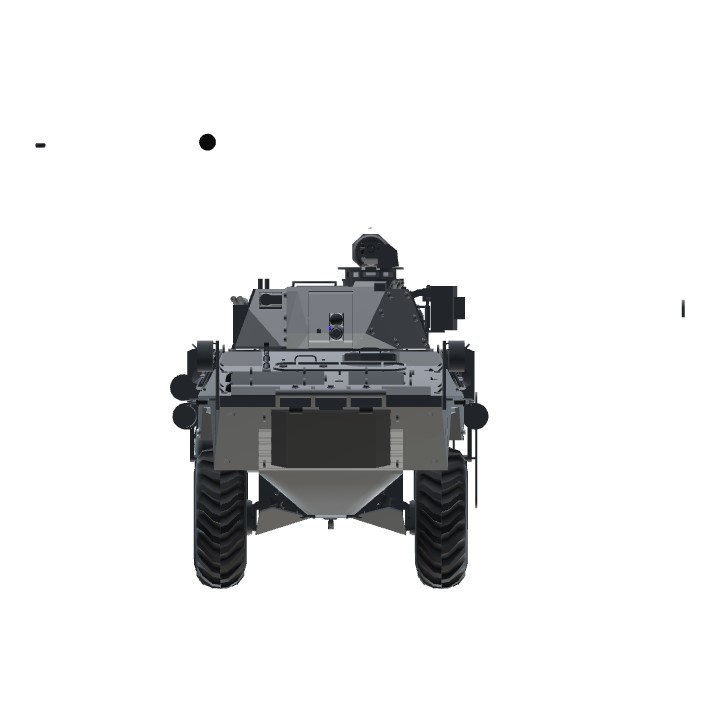This thing has been in development hell for far too long so I set myself the deadline of July 31st. If you're wondering just how long its been in dev hell exactly; 1.5 years so far.
Controls
AG1 - Activate TOW ATGM
AG2 - Extend Raid Armour
AG3 - Unlock Driver Assist
AG5 - Aim Turret-Top MG
AG6 - Left Blinkers
AG7 - Right Blinkers
AG8 - Lock/Unlock Turret
Pitch + Roll driving.
Trim - Gun Elevation/Depression
Yaw - Gun Traverse
AG4+Throttle - Amphibious Propellers
VTOL - Adjust Mirrors.
LandingGear - Retreat into hatch.
Armament
1x 90mm Cannon
2x bjac.co "Dart" TOW Laser-Guided Missiles
1x 20mm Einherjar Mk.I Machine Gun
1x 15mm Bore-side Machine Gun
History
The Chupacabra Amphibious IFV was an IFV designed and developed in the early 80's, later deployed in combat from 1989 to 2015. Largely considered a controversial vehicle. To its supporters the Chupacabra is considered to be a perfect all-rounder capable of taking on infantry and MBT's as well as traverse any terrain including water, while the Chupacabra's detractors often regard it as poorly armoured and poorly thought out as it attempts to suit three completely different landscapes of war (urban, rural, and beach-landing) but doesn't fully commit to either one.
Variants
The M.I was the urban modification of the Chupacabra platform, boasting a 40mm remote controlled auto grenade launcher and (depending on the deployment) a 20mm remote controlled variant of the Einherjar Mk.I as well as a defense suite similar to the TUSK suite with explosive reactive armour, slat armour, an array of area awareness sensors and increased numbers of optics. A majority of these models had the amphibious module removed and replaced with computers to run the active defense systems on board.
The M.II was the rarest modification of the Chupacabra. Pretty much just an M.I but with a TOW missile launcher instead of the 40mm grenade launcher.
The M.III was the rural modification of the Chupacabra platform. The M.III boasted the heaviest fire power of the four modifications, carrying an Einherjar Mk.I, a 15mm bore-side machine gun, a 90mm cannon, & holstering two TOW missiles. The M.III was also fitted with 4 external heavy cargo racks, an extra external fuel tank, an auxiliary power unit, & short range comms to help keep rural operations quiet.
Nothing is known about the M.IV
Design and development
The design process of the Chupacabra was nothing short of messy as bjac.co attempted to integrate work with American conglomerates and the Pentagon. The goal of these partnerships was to secure a place in the US military industrial complex, what resulted was unneeded bootlicking and kissing up to the US government as the design changed and changed. The initial drafts of the Chupacabra depicted an 8 wheeled lightly armoured troop carrier but what resulted was a modular, amphibious, medium armoured, 6 wheeled weapons platform that could also carry troops.
The Chupacabra platform boasted a plethora of different accommodations, the most notable ones being it's semi-modular design, amphibious capabilities and hefty resistance to mines and IEDs. The Chupacabra platform was designed with four modifications in mind; the M.I, M.II, M.III, & M.IV. All of which allowed it perform recon, personnel transit, logistics, anti-tank/anti-infantry, and minesweeping.
Usage
The Chupacabra platform saw extensive use in the middle east during operation desert storm and beyond. After 2015 the US military began to stop using the Chupacabra as warfare doctrines began to change and the focus of the US Military shifted. Canada and Australia continued to use the Chupacabra until 2022 but largely as a training vehicle as it was pretty forgiving when it came to making unskilled maneuvers.
A total of 643 units were manufactured from 1987 to 1990 but only 555 actually saw any sort of use. The fate of most Chupacabras were museums, and recycling plants. Some were stripped down for parts as roughly 12% of the vehicle's parts were compatible with BAE System's own Bradley IFV.
The Chupacabra largely became a footnote in the bjac.co company history. The most notable thing about its existence is that it existed.
Specifications
General Characteristics
- Predecessor bjac.co Chupacabra M.III IFV
- Created On Windows
- Wingspan 24.0ft (7.3m)
- Length 26.6ft (8.1m)
- Height 16.7ft (5.1m)
- Empty Weight 46,840lbs (21,246kg)
- Loaded Weight 48,259lbs (21,890kg)
Performance
- Power/Weight Ratio 0.419
- Horse Power/Weight Ratio 0.041
- Wing Loading N/A
- Wing Area 0.0ft2 (0.0m2)
- Drag Points 18605
Parts
- Number of Parts 764
- Control Surfaces 0
- Performance Cost 3,965

